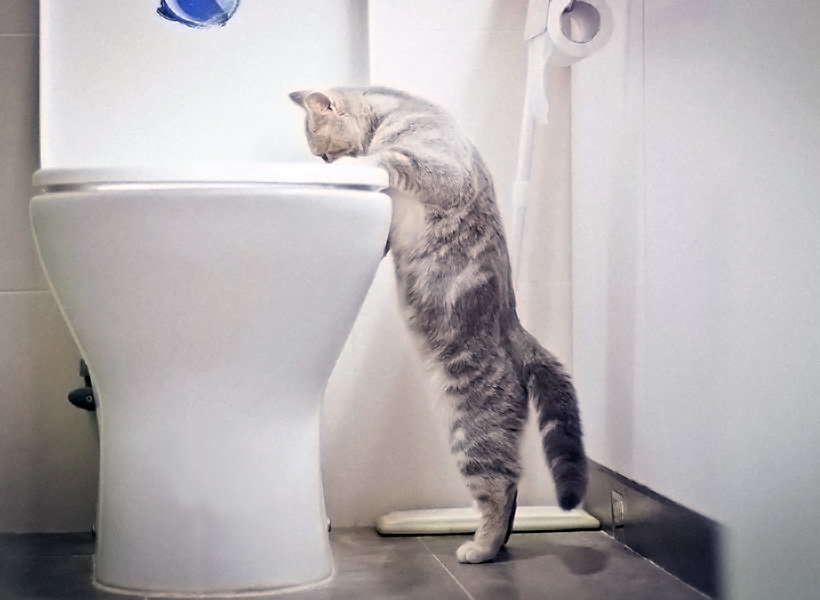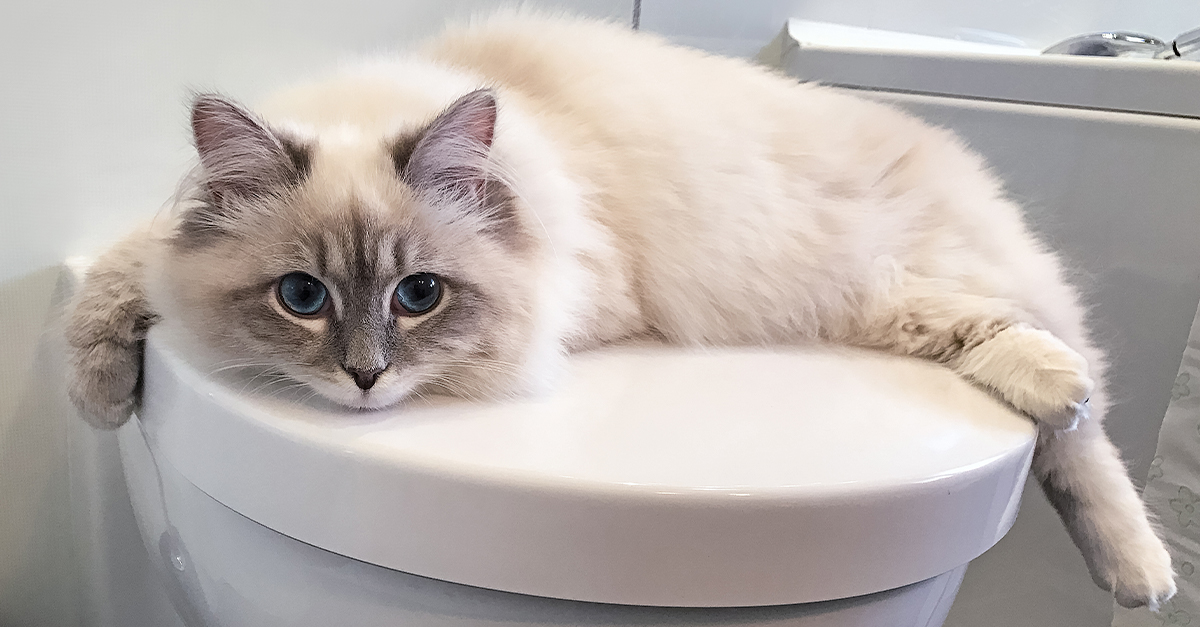Uncovering Why Animal Waste Needs to Not Be Flushed Down the Toilet
Uncovering Why Animal Waste Needs to Not Be Flushed Down the Toilet
Blog Article
They are making several great observations relating to Don't Flush Your Pets Poo Down The Loo, Vet Warns in general in the article underneath.

When it concerns disposing of waste, specifically animal waste, many people usually resort to the practical alternative of flushing it down the commode. However, this seemingly easy remedy can have major consequences for the atmosphere and public health. In this short article, we'll discover why flushing pet waste down the toilet is a bad idea and give different approaches for proper disposal.
Introduction
Proper garbage disposal is important for keeping ecological sustainability and public health. While it may appear safe to flush animal waste down the bathroom, it can lead to various concerns, both for the setting and human health.
Dangers of flushing animal waste
Ecological impact
Purging animal waste introduces hazardous microorganisms and microorganisms into rivers, which can negatively influence marine ecosystems. These pathogens can infect water sources and injury aquatic life, interrupting delicate communities.
Public health issues
Pet waste includes damaging germs such as E. coli and Salmonella, which can present significant health and wellness dangers to humans. Purging animal waste down the toilet can pollute water products, causing the spread of diseases and infections.
Alternatives to flushing
As opposed to flushing animal waste down the commode, there are numerous alternative disposal techniques that are extra environmentally friendly and sanitary.
Composting
Composting animal waste is an eco-friendly means to get rid of it. By composting, organic matter is broken down into nutrient-rich soil, which can be utilized to fertilize gardens and plants.
Garbage dump disposal
Disposing of animal waste in a land fill is an additional option. While not as environmentally friendly as composting, it is a much safer alternative to flushing, as it protects against the contamination of water sources.
Animal garbage disposal systems
There are customized animal waste disposal systems offered that securely and hygienically get rid of animal waste. These systems typically make use of enzymes to break down waste and get rid of smells.
Actions to appropriate pet waste disposal
To make certain correct disposal of animal waste, adhere to these actions:
Scooping and nabbing waste
On a regular basis scoop and bag animal waste using biodegradable bags. This protects against waste from infecting the environment.
Making use of designated waste containers
Dispose of bagged pet waste in marked waste containers, such as garden compost containers or garbage dump bins. Prevent flushing it down the toilet whatsoever costs.
Cleaning can and pet dog locations on a regular basis
On a regular basis tidy litter boxes and pet locations to avoid the buildup of waste and microorganisms. Usage pet-safe cleansing products to maintain health.
Benefits of correct disposal techniques
Adopting appropriate disposal methods for pet waste website offers numerous advantages:
Decreased environmental pollution
Correct disposal techniques lower the risk of environmental pollution, securing rivers and environments from contamination
Reduced threat of water contamination.
By avoiding flushing pet waste down the commode, the risk of water contamination is substantially lowered, safeguarding public health.
Enhanced sanitation and health
Appropriate disposal approaches advertise far better hygiene and health, developing a more secure setting for both human beings and pets.
Final thought
To conclude, purging animal waste down the bathroom is dangerous to the atmosphere and public health. By embracing alternate disposal techniques and adhering to appropriate waste monitoring methods, we can reduce the adverse effect of animal waste and contribute to a cleaner, healthier planet.
Why You Should Never Flush Cat Poop Down the Toilet
A rose by any other name might smell as sweet, but not all poop is created equal. Toilets, and our sewage systems, are designed for human excrement, not animal waste. It might seem like it couldn’t hurt to toss cat feces into the loo, but it’s not a good idea to flush cat poop in the toilet.
First and foremost, assuming your cat uses a litter box, any waste is going to have litter on it. And even the smallest amount of litter can wreak havoc on plumbing.
Over time, small amounts build up, filling up your septic system. Most litter sold today is clumping; it is made from a type of clay that hardens when it gets wet. Ever tried to scrape old clumps from the bottom of a litter box? You know just how cement-hard it can get!
Now imagine just a small clump of that stuck in your pipes. A simple de-clogger like Drano isn’t going to cut it. And that means it’s going to cost you big time to fix it.
For an amusing, graphic tale of what happens when you flush too much litter down the toilet all at once, take a few minutes to read Gene Weingarten’s 2017 Washington Post column “So that’s what happens when you flush cat litter down the toilet.”
Parasitic Contamination
Believe it or not, your healthy kitty may be harboring a nasty parasite. Only cats excrete Toxoplasma in their feces. Yet it rarely causes serious health issues in the cats that are infected. Most people will be fine too if infected. Only pregnant women and people with compromised immune systems are at risk. (If you’ve ever heard how women who are expecting are excused from litter cleaning duty, Toxoplasma is why.)
But other animals may have a problem if infected with the parasite. And human water treatment systems aren’t designed to handle it. As a result, the systems don’t remove the parasite before discharging wastewater into local waterways. Fish, shellfish, and other marine life — otters in particular — are susceptible to toxoplasma. If exposed, most will end up with brain damage and many will die.
Depending on the species of fish, they may end up on someone’s fish hook and, ultimately on someone’s dinner plate. If that someone has a chronic illness, they’re at risk.
Skip the Toilet Training
We know there are folks out there who like to toilet train their cats. And we give them props, it takes a lot of work. But thanks to the toxoplasma, it’s not a good idea.
Leave the toilet to the humans, and accept your future litter cleaning duty.

On a regular basis tidy litter boxes and pet locations to avoid the buildup of waste and microorganisms. Usage pet-safe cleansing products to maintain health.
Benefits of correct disposal techniques
Adopting appropriate disposal methods for pet waste website offers numerous advantages:
Decreased environmental pollution
Correct disposal techniques lower the risk of environmental pollution, securing rivers and environments from contamination
Reduced threat of water contamination.
By avoiding flushing pet waste down the commode, the risk of water contamination is substantially lowered, safeguarding public health.
Enhanced sanitation and health
Appropriate disposal approaches advertise far better hygiene and health, developing a more secure setting for both human beings and pets.
Final thought
To conclude, purging animal waste down the bathroom is dangerous to the atmosphere and public health. By embracing alternate disposal techniques and adhering to appropriate waste monitoring methods, we can reduce the adverse effect of animal waste and contribute to a cleaner, healthier planet.
Why You Should Never Flush Cat Poop Down the Toilet
A rose by any other name might smell as sweet, but not all poop is created equal. Toilets, and our sewage systems, are designed for human excrement, not animal waste. It might seem like it couldn’t hurt to toss cat feces into the loo, but it’s not a good idea to flush cat poop in the toilet.
First and foremost, assuming your cat uses a litter box, any waste is going to have litter on it. And even the smallest amount of litter can wreak havoc on plumbing.
Over time, small amounts build up, filling up your septic system. Most litter sold today is clumping; it is made from a type of clay that hardens when it gets wet. Ever tried to scrape old clumps from the bottom of a litter box? You know just how cement-hard it can get!
Now imagine just a small clump of that stuck in your pipes. A simple de-clogger like Drano isn’t going to cut it. And that means it’s going to cost you big time to fix it.
For an amusing, graphic tale of what happens when you flush too much litter down the toilet all at once, take a few minutes to read Gene Weingarten’s 2017 Washington Post column “So that’s what happens when you flush cat litter down the toilet.”
Parasitic Contamination
Believe it or not, your healthy kitty may be harboring a nasty parasite. Only cats excrete Toxoplasma in their feces. Yet it rarely causes serious health issues in the cats that are infected. Most people will be fine too if infected. Only pregnant women and people with compromised immune systems are at risk. (If you’ve ever heard how women who are expecting are excused from litter cleaning duty, Toxoplasma is why.)
But other animals may have a problem if infected with the parasite. And human water treatment systems aren’t designed to handle it. As a result, the systems don’t remove the parasite before discharging wastewater into local waterways. Fish, shellfish, and other marine life — otters in particular — are susceptible to toxoplasma. If exposed, most will end up with brain damage and many will die.
Depending on the species of fish, they may end up on someone’s fish hook and, ultimately on someone’s dinner plate. If that someone has a chronic illness, they’re at risk.
Skip the Toilet Training
We know there are folks out there who like to toilet train their cats. And we give them props, it takes a lot of work. But thanks to the toxoplasma, it’s not a good idea.
Leave the toilet to the humans, and accept your future litter cleaning duty.

We had been made aware of that article on through a pal on a different web property. Sharing is good. Helping people is fun. Thanks for going through it.
About This Report this page